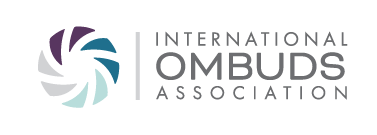- About IOA
- About IOA
- Board of Directors
- Committees & Task Forces
- Regional Advancement Communities
- Strategic Plan
- Standards of Practice & Code of Ethics
- Frequently Asked Questions
- IOA's Ombuds for Members
- Inclusion and Belonging
- IOA Values and Norms
- IOA Concern and Complaint Policy
- Contact Us
- Sponsorship Opportunities
- IOA Sponsors
- About Ombuds
- Membership
- Events & Training
- Certification
- Resources
- Publications
Ombuds Office AccessibilityEnsuring Access to Ombuds Services for All Members of Your OrganizationAs ombuds practitioners, we are obligated to serve all members of our organization’s communities. Such members undoubtedly include individuals with disabilities. Even though individuals with disabilities constitute 10 percent of the U.S. population, they may be underserved by ombuds offices. Such individuals may actually be of most need of ombuds’ services since there are multiple obstacles and barriers that may make people with disabilities more likely to be underemployed or marginalized in the workforce, and thus seek out ombuds services. But without proper measures in place, ombuds programs and services may be inaccessible to people with disabilities. The following information is meant to provide a foundation of resources and best practices to help ensure that ombuds offices are universally accessible and capable of serving all members of their communities, including visitors with disabilities. Why should the ombuds office be accessible to visitors with disabilities?
Accessibility ChecklistThe following checklist is designed to help ombuds evaluate the level of universal access design of their offices. It is based on materials and information derived from Washington University’s Disabilities, Opportunities, Internetworking, and Technology Center (DO-IT). Ombuds should evaluate the following four basic areas for accessibilityIn sum, making the ombuds office universally accessible is possible by careful evaluation and planning. By doing so, ombuds can maximize the benefit that the ombuds office brings to visitors and the organization, as well as ensure that the ombuds office can provide equal and comprehensive services to all members of the organization’s community. Additional Links of Interest
|
